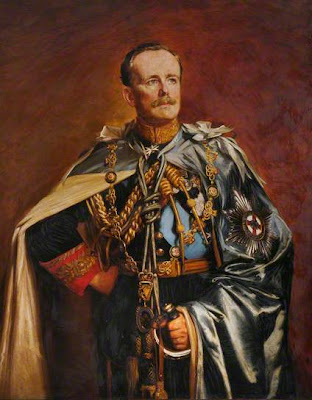This is a branch of the ancient family of TISDALL in England, which bore arms "three pheons argent on a shield sable." When, in 1679, Richard St George, Ulster King of Arms, ratified and confirmed the arms to Michael Tisdall, of Mount Tisdall, County Meath, and his brothers, he added "a thistle or," for distinction, as is stated in the original certificate in Ulster's office.
The first of the family in Ireland was MICHAEL TISDALL, who had a sister, Catherine.
William was succeeded by his cousin, Dr Oliver Tisdall, who came with his family to live on the estate in 1955 and he immersed himself in its activities.
This Michael Tisdall was of Castleblayney, County Monaghan; he had issue, by his wife Ann (née Singleton), seven sons and two daughters, namely,
MICHAEL, of whom presently;James;Thomas;John;Richard, father of Philip Tisdall;George;William, of Carrickfergus; father of William Tisdall;Catherine; another daughter.
The eldest son,
MICHAEL TISDALL, of Mount Tisdall, County Meath, purchased in 1668 the Manor of Martry, County Meath (wherein the mansion of Charlesfort stands).
He was Secondary of the Court of King's Bench in Ireland, and JP for County Meath in 1679, when arms were granted to him and his brother James by Henry St George, Norroy and Ulster King of Arms.
Mr Tisdall married, in 1666, Anne, daughter of the Rev William Barry, Rector of Killucan, brother of Sir James Barry, Knight, 1st Baron Santry, Lord Chief Justice of the King's Bench in Ireland, and had issue,
WILLIAM, his heir;Michael;Catherine; Elizabeth.
The elder son,
WILLIAM TISDALL (1668-1725), of Mount Tisdall, wedded Frances, third daughter of the Hon Robert FitzGerald, and sister of Robert, 19th Earl of Kildare, and by her had issue,
MICHAEL, his heir;George (Rev Dr).
Mr Tisdall was succeeded by his elder son,
MICHAEL TISDALL (1672-1726), MP for Ardee, 1713-26, who espoused Catherine, daughter of the Rt Hon William Palmer, Principal Secretary in Ireland, Secretary for War, and Commissioner for Appeals, MP for Castlebar, 1695-9, 1703-13, and had issue,
CHARLES, his heir;Michael;Catherine; Frances.
He was succeeded by his elder son,
CHARLES TISDALL (1719-57), of Mount Tisdall, who built a new house on his manor of Martry, and called it CHARLESFORT, which has since been the designation of the family.
He married, in 1754, Hester, daughter of Oliver Cramer, second son of Oliver Cramer, of Ballyfoyle, County Kilkenny, by Hester his wife, daughter of Sir John Coghill, Knight, LL.D, Master in Chancery, and had issue,
MICHAEL, his heir;Charles.
The elder son,
MICHAEL TISDALL (1755-94), of Charlesfort, County Meath, High Sheriff of County Meath, 1788, wedded, in 1779, Juliana, daughter and co-heir (with her sister Jane, who married George, 1st Baron Headley) of Arthur Blennerhassett, of Ballyseedy, County Kerry, and had issue,
CHARLES ARTHUR, his heir;James (Rev);Archibald, rear-admiral in the Royal Navy;Juliana; Catherine.
Mr Tisdall wedded secondly, the widow of the Rev _______ Crow.
He was succeeded by his eldest son,
CHARLES ARTHUR TISDALL (1782-1835), of Charlesfort, High Sheriff of County Meath, 1811, who espoused, in 1807, Elizabeth, daughter of John Vernon, of Clontarf Castle, County Dublin, and had issue,
JOHN, his heir;William;Archibald, major-general in the Army;James;Juliana; Henrietta; Elizabeth; Maria; Frances.
Mr Tisdall was succeeded by his eldest son,
JOHN TISDALL JP DL (1815-92), of Charlesfort, High Sheriff of County Meath, 1841, who married, in 1837, Isabella, daughter of the Hon George Knox, and had issue,
Charles Arthur, died unmarried 1869;John Knox, father of CHARLES ARTHUR;George William;Henry Chichester;Vernon Archibald;Richard Louis;Arthur James;Alfred Oliver (Rev);Harriet Elizabeth; Isabella Maria; Anne Charlotte.
Mr Tisdall was succeeded by his grandson,
CHARLES ARTHUR TISDALL (1875-1914), of Charlesfort, Major, Irish Guards, who wedded, in 1904, Gwynneth May, only child of Charles Adshead, and had issue, two daughters, of whom one was born in 1907.
In 1914 Major Tisdall died, just a month after the 1st World War broke out, killed in action in the retreat from Mons in Belgium.
The Major's brother, William, came to live at Charlesfort in 1904, inherited in 1914 and remained there until his death in 1954.
During the 1st World War William stabled army horses at Charlesfort and tilled some of the land for vegetable growing.
William was High Sheriff of County Meath in 1921.
William's son, Michael, was in the army and was accidentally killed in 1940 during a military training exercise.
William Tisdall's wife also died the same year. Five years later William married a second time. His wife was Una Palmer Burke from Ballina.
William died aged 78 in 1954.
William was succeeded by his cousin, Dr Oliver Tisdall, who came with his family to live on the estate in 1955 and he immersed himself in its activities.
Dr Tisdall died in 1964; his widow sold Charlesfort in 1968.
In recent years the Hogan family have rescued Charlesfort House and restored it.
 |
| Charlesfort (Image: Hogan's Farm) |
CHARLESFORT, near Kells, County Meath, is a Georgian house comprising two storeys with a lower wing.
The original house is said to have been built in the 1740s; remodelled in the 1780s; and again in 1841.
The hall has Corinthian columns, and the drawing-room - in the early 18th century style - contains panelling.
The interior is said to have been rearranged by the Rev Daniel Beaufort.






















